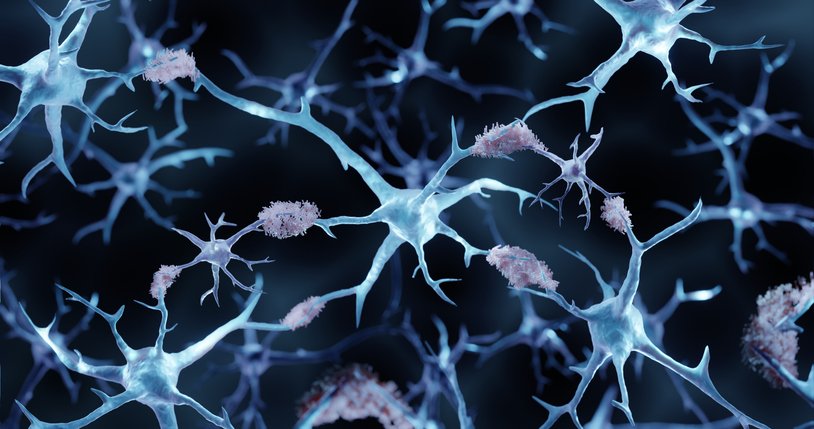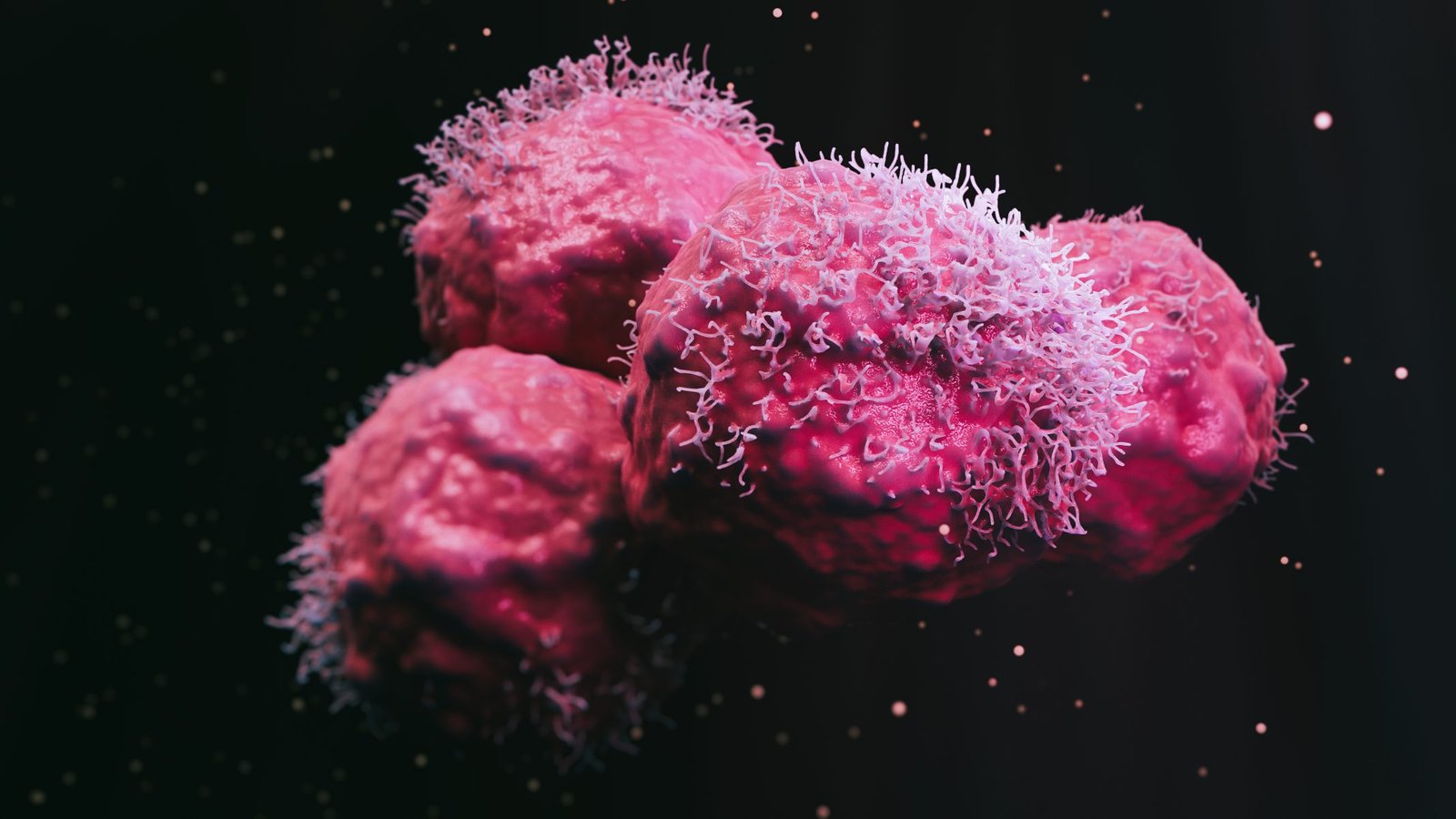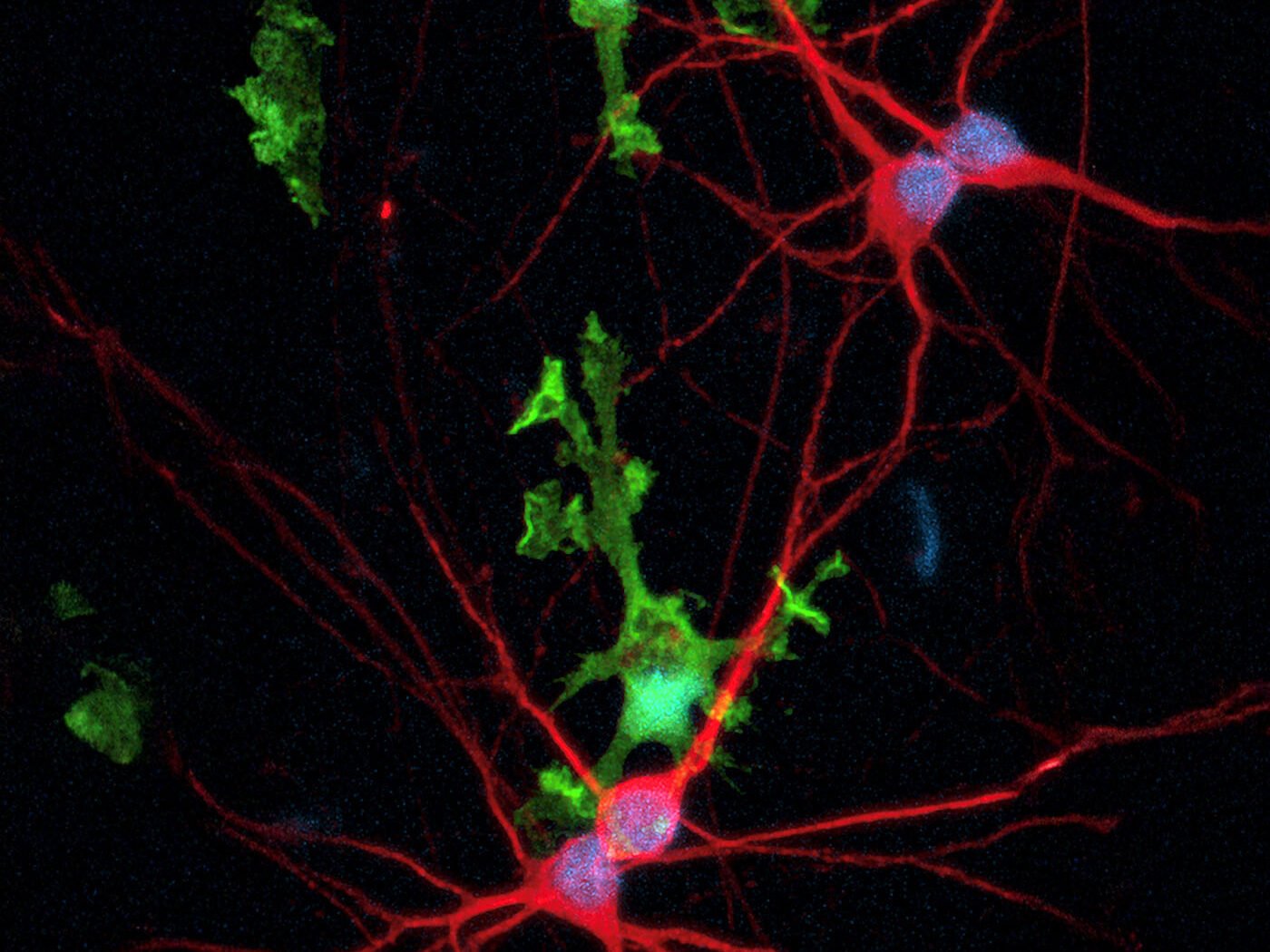Harvard Medical School researchers studying mice and human tissues have found a link between lithium (Li) deficiency in the brain and the development of Alzheimer’s disease.
Headed by Bruce Yankner, MD, PhD, co-director, Paul F. Glenn Center for Biology of Aging Research, and professor of genetics and neurology at Harvard Medical School, the scientists’ study shows for the first time that lithium occurs naturally in the brain, shields it from neurodegeneration, and is involved in maintaining the normal function of all major brain cell types. The newly reported findings—10 years in the making—are based on a series of murine experiments and on analyses of human brain tissue and blood samples from individuals in various stages of cognitive health.
The scientists found that lithium loss in specific regions of the human brain they studied was one of the earliest changes leading to Alzheimer’s, while in mice, similar lithium depletion accelerated brain pathology and memory decline. The lower lithium levels affected all major brain cell types and, in mice, gave rise to changes recapitulating Alzheimer’s disease.
The team further discovered that this reduction in lithium levels was due to the metal binding to amyloid plaques and impaired uptake in the brain. In effect, the results suggest that amyloid beta (Aβ) deposits beginning to form in the early stages of dementia in both humans and mouse models, bind to lithium, reducing lithium’s normal function in the brain.
Amyloid-evading compound reversed AD pathology in mice
The researchers then identified a class of lithium compounds that can evade capture by Aβ. Treating mice with the most potent amyloid-evading compound, lithium orotate (LiO), reversed Alzheimer’s disease pathology, prevented brain cell damage, and restored memory.
Although the findings need to be confirmed in humans through clinical trials, they do suggest that measuring lithium levels could help screen for early Alzheimer’s disease. The findings also point to the importance of testing amyloid-evading lithium compounds for treatment or prevention.
![Treating mice with the amyloid-evading lithium orotate (top row) reduced amyloid beta (left) and tau (right) much more effectively than lithium carbonate (bottom row). [Yankner Lab]](https://www.genengnews.com/wp-content/uploads/2025/08/low-res-23-300x153.jpeg)
The results unify decades-long observations in patients, providing a new theory of the disease and potentially leading to a new strategy for early diagnosis, treatment, and possibly prevention. “The idea that lithium deficiency could be a cause of Alzheimer’s disease is new and suggests a different therapeutic approach,” suggested Yankner, who in the 1990s was the first to demonstrate that Aβ is toxic. The study raises hopes that researchers could one day use lithium to treat the disease in its entirety rather than focusing on a single facet, such as Aβ or tau, he suggested.
Speaking to GEN, Yankner said, “My hope is that the ability of physiological dose lithium to reverse the changes of Alzheimer’s disease in mouse models will translate to the aging human population.”
Yankner is senior author of the team’s published paper in Nature, titled “Lithium deficiency and the onset of Alzheimer’s disease,” in which the team concluded, “These findings reveal physiological effects of endogenous Li in the brain and indicate that disruption of Li homeostasis may be an early event in the pathogenesis of AD. Li replacement with amyloid-evading salts is a potential approach to the prevention and treatment of AD.”
Affecting an estimated 400 million people worldwide, Alzheimer’s disease is characterized by an array of brain abnormalities such as clumps of the protein Aβ, neurofibrillary tangles of tau protein, and loss of a protective protein called REST, but these never explained the full story of the disease. For example, some people with such abnormalities show no signs of cognitive decline. Recently developed treatments that target Aβ typically don’t reverse memory loss, and only modestly reduce the rate of decline.
![Lithium deficiency thinned the myelin that coats neurons (right) compared to normal mice (left).[Yankner Lab]](https://www.genengnews.com/wp-content/uploads/2025/08/low-res-24-300x142.jpeg)
While it’s clear that genetic and environmental factors affect the risk of Alzheimer’s, scientists haven’t figured out why some people with the same risk factors develop the disease while others don’t. As Yankner and colleagues further stated, “The identification of treatable causes of AD requires a fundamental understanding of the pathogenic processes leading to memory loss.” Significant progress has been made in defining gene variants that increase the risk for AD, but environmental factors that affect the timing of disease onset are not as well understood. “Several factors relating to diet, lifestyle, and the environment have been identified, but their contributions to AD pathogenesis are unclear.”
Altered homeostasis of metals is one such factor, the team continued, with studies focusing primarily on the toxic effects of metals such as iron, copper, and zinc, which can promote Aβ aggregation, tau phosphorylation, or oxidative stress in model systems, they noted. “However, metals also have essential roles in brain function, and disruption of this normal physiology in AD is relatively unexplored.”
Could lithium be part of the AD disease mechanism?
Yankner became interested in lithium while using it to study the neuroprotective protein REST. “About 10 years ago, we found that the transcription factor REST, previously established as a central regulator of neural development, was involved in the response of the brain to aging and Alzheimer’s disease,” he explained to GEN. “One component of this story was the regulation of REST by the Wnt signaling pathway. Incubation with lithium is a classic approach to activating Wnt signaling. While using lithium in this context, we were impressed by its ability to reduce the various neuropathologic and cellular changes in animal models of Alzheimer’s. One day, I wondered whether lithium itself might be part of the disease mechanism. However, lithium was not thought to be a physiological mediator of brain function, just a drug with pharmacological effects at high doses.”
Finding out whether lithium is found in the human brain and whether its levels change as neurodegeneration develops and progresses required access to brain tissue. For their study, published in Nature, the Yankner lab partnered with the Rush Memory and Aging Project in Chicago, which has a bank of postmortem brain tissue donated by thousands of study participants across the full spectrum of cognitive health and disease. Having that range was critical because trying to study the brain in the late stages of Alzheimer’s is like looking at a battlefield after a war, said Yankner; there’s a lot of damage, and it’s hard to tell how it all started. But in the early stages, “before the brain is badly damaged, you can get important clues,” he said.
“… we set out to determine whether there might be endogenous lithium in the human brain by taking advantage of new high sensitivity inductively coupled plasma mass spectroscopy,” Yankner further explained to GEN.
Led by study first author Liviu Aron, PhD, a senior research associate in the Yankner Lab, the team used an advanced type of mass spectroscopy called inductively coupled plasma mass spectrometry (ICP-MS) to measure trace levels of about 30 different metals in the brain’s prefrontal cortex (PFC) and cerebellum, and in the blood of cognitively healthy people—no cognitive impairment (NCI)—and in those with mild cognitive impairment (MCI), and those with advanced Alzheimer’s disease.
![Lithium was the only metal that differed significantly between people with and without mild cognitive impairment, often a precursor to Alzheimer’s disease. [Aron et al, 'Lithium deficiency and the onset of Alzheimer’s disease', Nature]](https://www.genengnews.com/wp-content/uploads/2025/08/low-res-300x251.webp)
They found that lithium was the only metal that had markedly different levels across groups and changed at the earliest stages of memory loss. Its levels were high in the cognitively healthy donors but greatly diminished in those with mild impairment or full-blown Alzheimer’s. “Of all the metals surveyed, only one, Li, showed significantly reduced levels in the PFC of individuals with both MCI and AD,” the team wrote in their paper. “… we found that lithium is normally present in the brain at approximately 1,000-fold lower levels than those associated with lithium treatment in bipolar disorder,” Yankner told GEN.
“Perhaps the most surprising finding was that a systematic analysis of all the major metals and many trace metals showed that lithium was the only metal significantly reduced in the brains of individuals with mild cognitive impairment, an early condition of memory loss that often leads to Alzheimer’s disease, as well as in individuals with a diagnosis of Alzheimer’s disease. In fact, this was so surprising that we did the same experiment in a replication cohort with postmortem samples from different brain banks nationwide before believing the result.”
An essential role for lithium in brain physiology
The new study went beyond by directly observing lithium in the brains of people who hadn’t received lithium as a treatment, establishing a range that constitutes normal levels, and demonstrating that lithium plays an essential role in brain physiology. “Lithium turns out to be like other nutrients we get from the environment, such as iron and vitamin C,” Yankner said. “Our findings suggest that lithium is a natural substance in the brain that is biologically meaningful without giving it as a drug.”
![Top row: In a mouse model of Alzheimer’s disease, lithium deficiency (right) dramatically increased amyloid beta deposits in the brain compared with mice that had normal physiological levels of lithium (left). Bottom row: The same was true for the Alzheimer’s neurofibrillary tangle protein tau. [Yankner Lab]](https://www.genengnews.com/wp-content/uploads/2025/08/low-res-22-300x153.jpeg)
The scientists then took things a step further. They demonstrated in mice that lithium depletion isn’t merely linked to Alzheimer’s disease—it helps drive it. The researchers found that feeding healthy mice a lithium-restricted diet brought their brain lithium levels down to a level similar to that in patients with Alzheimer’s disease. This appeared to accelerate the aging process, giving rise to brain inflammation, loss of synaptic connections between neurons, and cognitive decline.
In Alzheimer’s mouse models, depleted lithium dramatically accelerated the formation of Aβ plaques and structures that resemble neurofibrillary tangles. “An increased amyloid plaque burden was observed as early as five weeks on the Li-deficient diet and continued to increase with longer-term treatment,” the investigators noted. And in aging healthy mice, the Li-deficient diet reduced cortical Li by about 50%, and this resulted in a significant increase in cortical and hippocampal Aβ42, which is the major pathogenic Aβ species in AD, as well as a trend to increased Aβ40. “Thus, Li deficiency accelerates Aβ deposition in AD mouse models and increases Aβ42 levels in ageing wild-type mice,” the team concluded.
Lithium depletion also activated inflammatory cells in the brain called microglia, impairing their ability to degrade amyloid; caused the loss of synapses, axons, and neuron-protecting myelin; and accelerated cognitive decline and memory loss—all hallmarks of Alzheimer’s disease.
Lithium deficiency impacts multiple brain cell types
The mouse experiments further revealed that lithium altered the activity of genes known to raise or lower the risk of Alzheimer’s, including the most well-known, APOE. Consistent with the transcriptome alterations, the investigators said, “… Li deficiency resulted in deleterious effects on neurons, microglia and oligodendrocytes with loss of synapses … Li deficiency impaired the ability of microglia to phagocytose and degrade Aβ, a phenotype that has been linked to Aβ deposition in AD.” In summary, the investigators further wrote, “… Li deficiency leads to a reactive pro-inflammatory state and impaired Aβ clearance …”
Continuing his explanation to GEN, Yankner added, “We found that endogenous lithium in the brain was reduced in aging people at the earliest stage of memory loss leading to Alzheimer’s disease, and this could be recapitulated in mouse models of the disease … Importantly, by simply depleting it from the mouse diet, we found that it had significant effects, changing the cell biology of the aging brain, the pathology of Alzheimer’s disease, and parameters of neurocognitive function.”
Replenishing lithium by giving the Alzheimer’s mouse models lithium orotate (LiO) in their water reversed the disease-related damage and restored memory function, even in older mice with advanced disease. Notably, maintaining stable lithium levels in the mice early in life prevented the onset of Alzheimer’s-type pathological changes—a finding which suggested that loss of lithium could drive the disease process. “Treatment with LiO at a dose that maintains serum and cortical Li levels in the endogenous range prevents and reverses AD pathology, neuroinflammatory changes, and memory loss in AD mouse models and aging wild-type mice,” the team noted in their discussion.
“What impresses me about lithium is the widespread effect it has on the various manifestations of Alzheimer’s. I really have not seen anything quite like it all my years of working on this disease,” said Yankner. “You have to be careful about extrapolating from mouse models, and you never know how well it will work until you try it in a controlled human clinical trial. But so far, the results are encouraging.”
Other lithium compounds are already used to treat bipolar disorder and major depressive disorder, but they are given at much higher concentrations that can be toxic, especially to older people. Yankner’s team found that lithium orotate is effective at one-thousandth that dose—enough to mimic the natural level of lithium in the brain. Mice treated for nearly their entire adult lives showed no evidence of toxicity. “We found that in normal aging mice, low micromolar levels of endogenous Li preserve cognitive function, reduce inflammation, and suppress Aβ generation,” they stated.
A few limited clinical trials of lithium for Alzheimer’s disease have shown some efficacy, but used lithium compounds at doses that can be toxic to aging individuals. The new research explains why. Yankner and colleagues found that Aβ might be sequestering these other lithium compounds before they could work, necessitating higher doses.
The investigators identified lithium orotate by developing a screening platform that searches a library of compounds for those that might bypass Aβ. Other researchers can now use the platform to seek additional amyloid-evading lithium compounds that might be even more effective. “One of the most galvanizing findings for us was that there were significant effects at this extremely low dose,” Yankner said.
An opportunity for studying lithium levels in humans
If replicated in further studies, the researchers say lithium screening through routine blood tests may one day offer a way to identify individuals at risk for Alzheimer’s who would benefit from treatment to prevent or delay disease onset. Studying lithium levels in people who are resistant to Alzheimer’s as they age might also help scientists establish a target level that they could help patients maintain to prevent onset of the disease, Yankner said.
Since lithium has not yet been shown to be safe or effective in protecting against neurodegeneration in humans, Yankner emphasizes that people should not take lithium compounds on their own. LiO hasn’t yet been used in a clinical setting, he commented to GEN. But he expressed cautious optimism that lithium orotate or a similar compound will move forward into clinical trials in the near future and could hopefully change the prospects for the treatment of Alzheimer’s disease. “My hope is that lithium will do something more fundamental than anti-amyloid or anti-tau therapies, not just lessening but reversing cognitive decline and improving patients’ lives,” he said.
“Following careful validation and preclinical studies, the first clinical application might be for early-stage memory loss, the condition we call mild cognitive impairment (MCI),” Yankner suggested to GEN. “This would be followed by more advanced Alzheimer’s disease.”
Interestingly, he noted, the team found that normal aging humans have a range of lithium levels in the brain, also showing that this correlates with some measures of memory and synapse function. In future longitudinal studies, the researchers aim to determine whether individuals at the high end of the lithium range are protected from cognitive decline as they age. “There is already a suggestion of this from the large epidemiological study of dementia and lithium in the drinking water out of Denmark,” GEN was told. “In a study of about 800,000 people, there was a statistically significant correlation between higher lithium levels in local drinking water and a lower incidence of dementia.”
Yankner and colleagues are interested in understanding whether changes in endogenous lithium homeostasis in the brain underlie other neurodegenerative and psychiatric disorders. “As a neuroscientist, I am excited about exploring the physiology of lithium in the brain,” he stated. “Our single-nucleus RNA sequencing data suggests significant effects on all brain cell types we examined. I suspect we have just scratched the surface of what will be some very interesting biology.”
The post Alzheimer’s Pathology Reversed, Memory Restored with Lithium Compound in Mice appeared first on GEN – Genetic Engineering and Biotechnology News.




